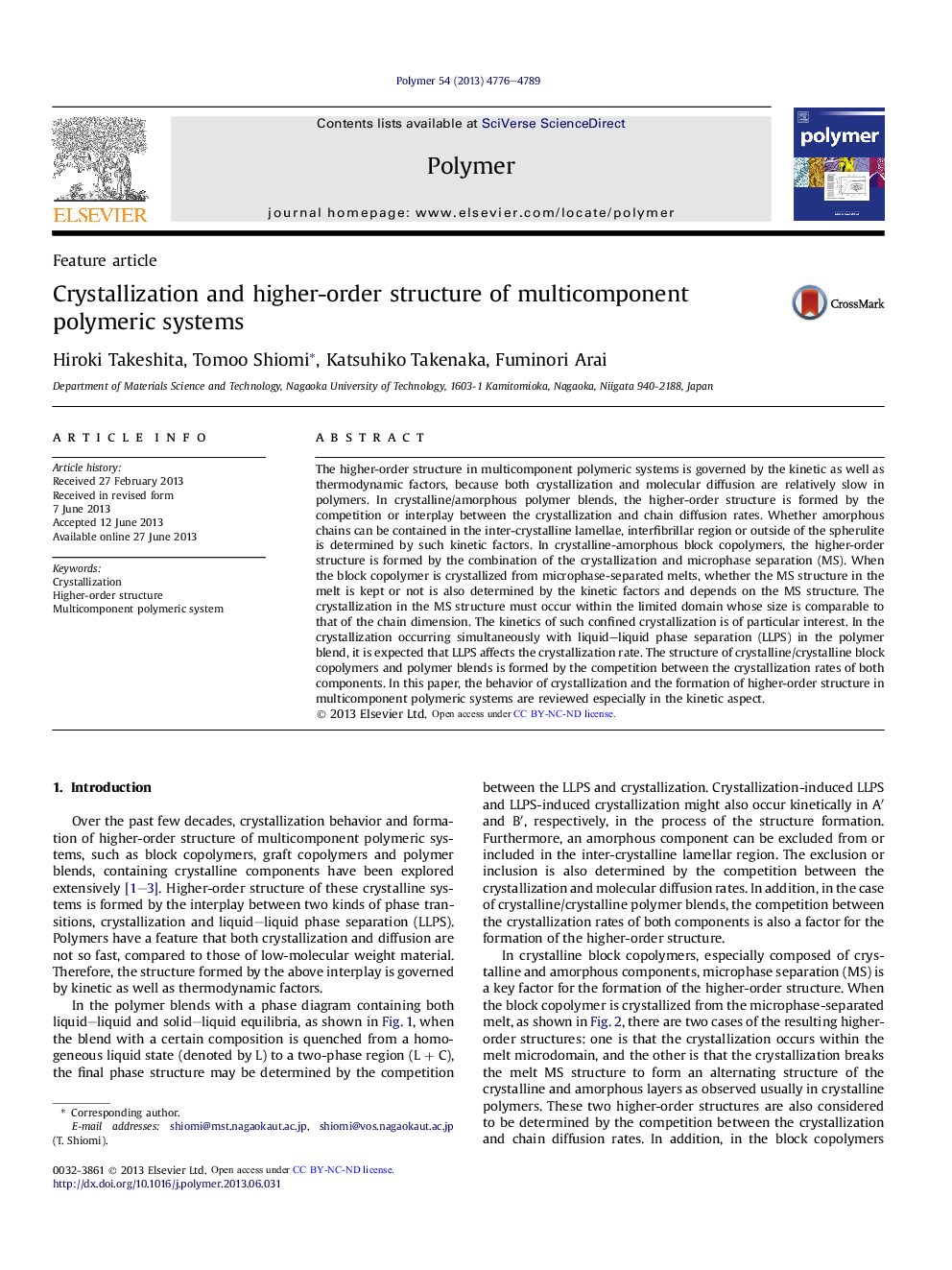| Article ID | Journal | Published Year | Pages | File Type |
|---|---|---|---|---|
| 5181509 | Polymer | 2013 | 14 Pages |
The higher-order structure in multicomponent polymeric systems is governed by the kinetic as well as thermodynamic factors, because both crystallization and molecular diffusion are relatively slow in polymers. In crystalline/amorphous polymer blends, the higher-order structure is formed by the competition or interplay between the crystallization and chain diffusion rates. Whether amorphous chains can be contained in the inter-crystalline lamellae, interfibrillar region or outside of the spherulite is determined by such kinetic factors. In crystalline-amorphous block copolymers, the higher-order structure is formed by the combination of the crystallization and microphase separation (MS). When the block copolymer is crystallized from microphase-separated melts, whether the MS structure in the melt is kept or not is also determined by the kinetic factors and depends on the MS structure. The crystallization in the MS structure must occur within the limited domain whose size is comparable to that of the chain dimension. The kinetics of such confined crystallization is of particular interest. In the crystallization occurring simultaneously with liquid-liquid phase separation (LLPS) in the polymer blend, it is expected that LLPS affects the crystallization rate. The structure of crystalline/crystalline block copolymers and polymer blends is formed by the competition between the crystallization rates of both components. In this paper, the behavior of crystallization and the formation of higher-order structure in multicomponent polymeric systems are reviewed especially in the kinetic aspect.
Graphical abstractDownload full-size image
